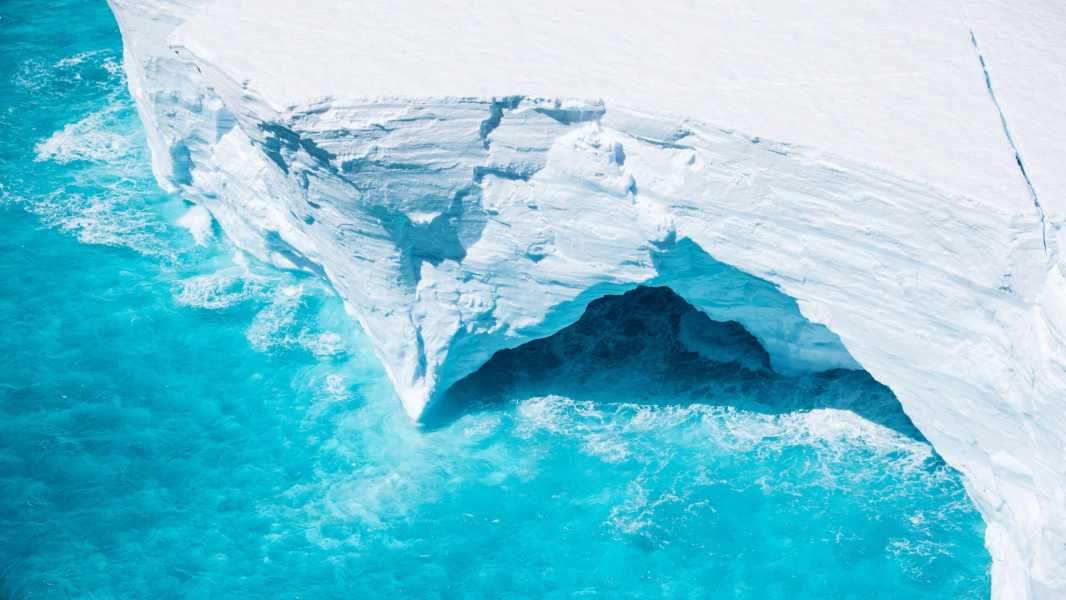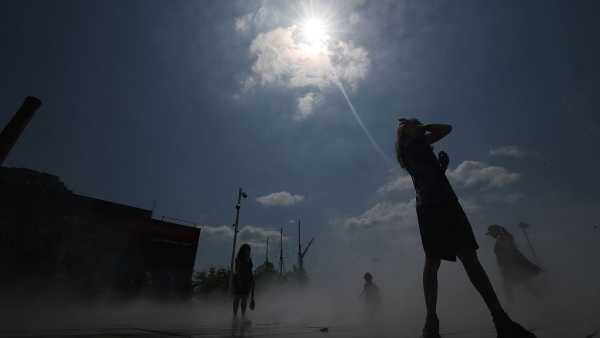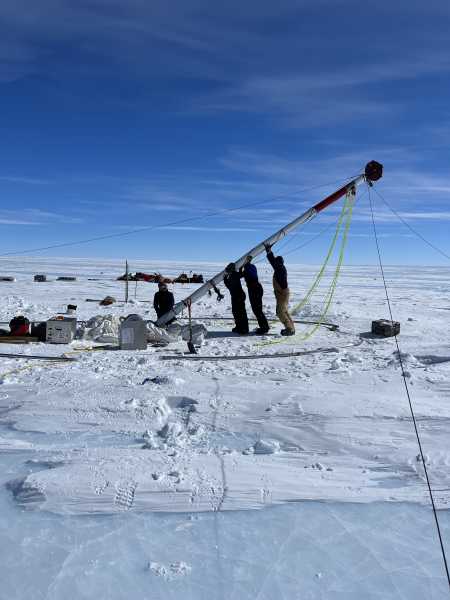
A-68 is an iceberg similar in size to the Delaware that broke off from the Larsen C Ice Shelf in a calving event in 2017. Pictured here is A-68(a), the largest fragment of the original iceberg, which is drifting near South Georgia Island. (Photo by Cpl Phil Dye, RAF/MoD, UK Ministry of Defence © Crown Copyright 2021, Open Government Licence)
Antarctica is rapidly losing ice, partly because of climate change. Large calving events, like the one that produced the Delaware-sized iceberg A-68 (5,800 square kilometers, or 2,239 square miles, in 2017), can destabilize ice shelves and attract public attention. But rare and extreme calving events make it difficult for scientists to predict them and understand their connection to climate change.
To explore potential links between climate change and the formation of large icebergs in Antarctica, McKee and colleagues conducted the first long-term analysis of the continent’s largest annual icebergs. Given that such large calves are rare and uneven, the researchers used statistical methods tailored to small, long-tailed data sets to identify changes in calving frequency over time. They focused on the largest iceberg that formed every year from 1976 to 2023. These icebergs had a surface area of up to 11,000 square kilometers (4,247 square miles).
The results of the study showed that the surface area of the largest annual iceberg has decreased slightly over time and that, despite the increasing influence of climate change, the risk of extreme calving has not increased. Although the climate has been gradually warming throughout the study, the area of the largest iceberg has not increased, indicating that extreme calving is not necessarily a direct consequence of climate change, the authors note.
However, other studies have shown that smaller calving events are increasing over time. This study highlights the importance of these events in the calving of Antarctic ice in the context of the “death by a thousand cuts” concept, the authors note. While extreme calving events attract attention, more frequent and smaller iceberg formations are the main source of climate-induced mass loss in Antarctica, they conclude.
The researchers also concluded that the largest Antarctic iceberg may be yet to come. While they do not predict an increase in the frequency of extreme calving events, their modeling suggests that a “once-in-a-century” iceberg could be about the same size as Switzerland (38,827 square kilometers or 14,991 square kilometers).
This article was originally published on Eos.org. Read the original article.
Eos.orgSocial Links Navigation
Sourse: www.livescience.com





